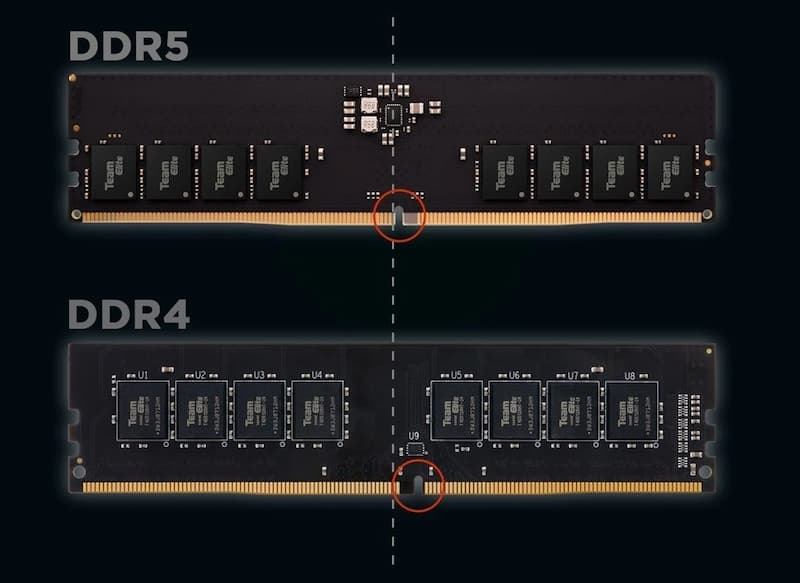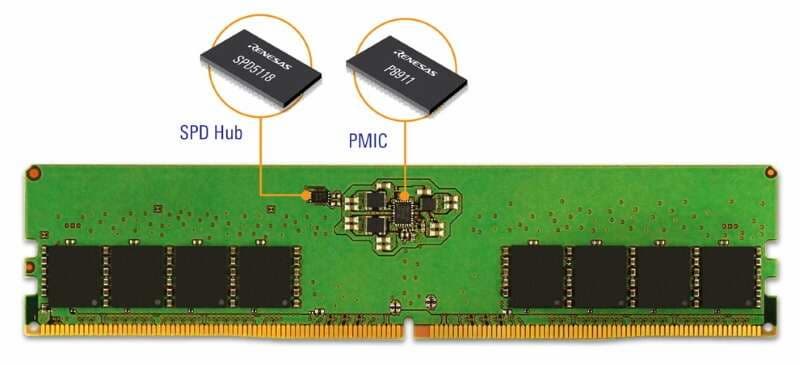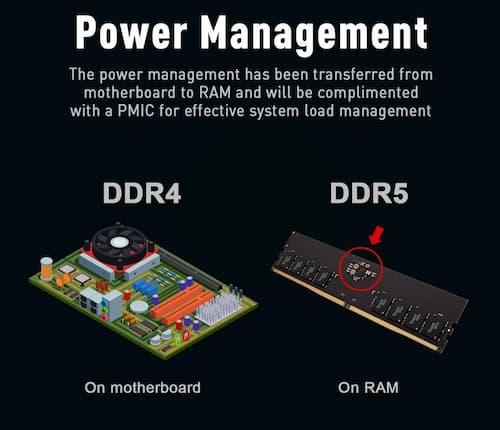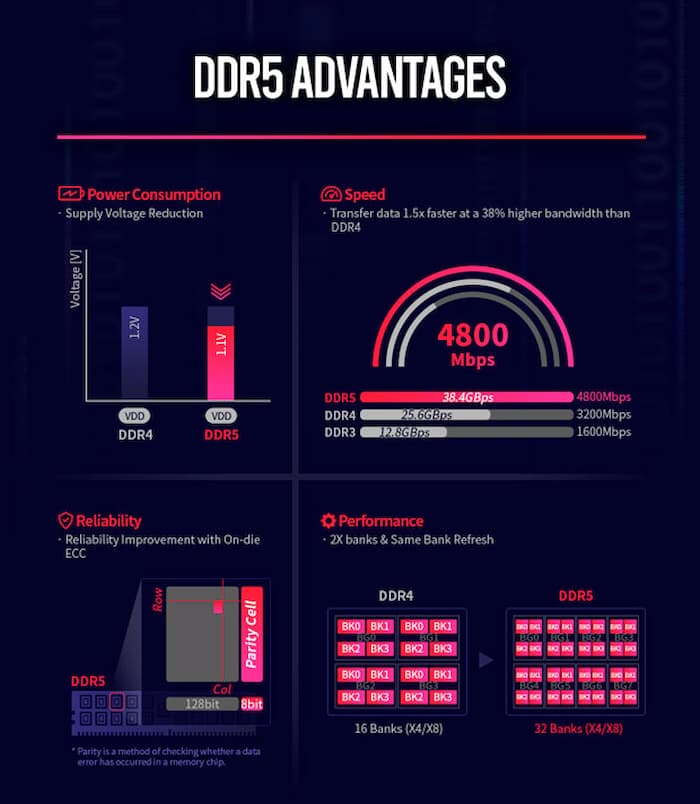Not long ago, the presence of heatsinks and other cooling systems on DDR4 modules made specialists smile… With the arrival of DDR5, this heatsink will no longer be a marketing appendage but an obligation. When you look at the news that is starting to proliferate about DDR5, you’d think that such an increase in speed and capacity would logically lead to a rise in the temperature of the chips. It is actually the design of the RAM that will be the cause of this additional heating. But let’s be clear, this is far from being a defect.
DDR5 will not consume more and will not increase the temperature of your PC.
Because unlike DDR4, the DDR5 array will take care of its own power management and voltage regulation. To do this, DDR5 will have its own power management integrated circuits (PMIC) and voltage regulation modules (VRM). Until now, it was the motherboard that took care of these functions with some dedicated components.
Voltage management on a Dimm DDR5
So we can’t talk about an increase in the overall temperature of your PC caused by DDR5 but rather a shift of the latter to the ram modules. It should also be noted that the tenson of DDR5 will be 1.1V against 1.2V on DDR4. So let’s keep in mind that DDR5 will not make your PC consume more power and it will not contribute to an increase in its operating temperature either. For SK Hynix, the energy saving should be around 20% between a DDR4 and DDR5 with equivalent capacity.
Heat sinks that will really
have to serve a purpose. If we talk about a lower voltage for DDR5, the fact that the management of the latter is now controlled much more precisely, will allow manufacturers of motherboards and overclockers to offer really advanced optimizations.
As mentioned, the presence of components on the PCB, especially the voltage regulation modules (VRM), will require a cooling system on the board. A classic heatsink will suffice for memories that the user does not want to push. On the other hand, power lovers will have a really interesting toolbox. In these conditions, the role of the heatsink will become really important. Until now, its role was limited to aesthetics and the choice of materials was secondary. It will now be necessary for brands such as Corsair, Micron and others who make high-end power strips their business, to invest in solutions that preserve this aesthetic but that provide real cooling solutions. Indeed overclocking will allow to push even more. Adata is already testing 1.6 volt profiles for its high-end DIMMs, a 45% increase in voltage that will obviously lead to a rise in temperature. So get ready to see watercooling kits for DDR5…kits that will actually have some use.
The post Why DDR5 will heat up appeared first on HardwareHeaven.com.




